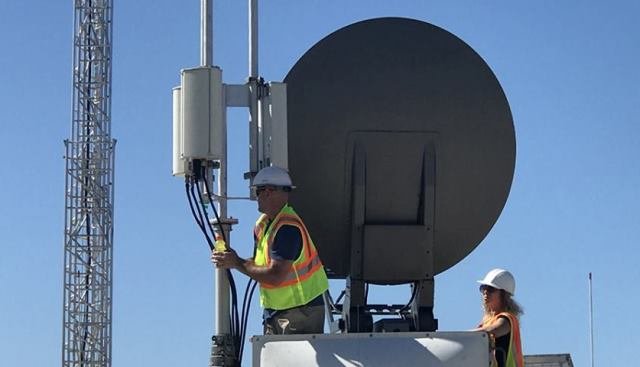Spectrum demand of Indian Space Research Organisation (ISRO) will force Indian mobile operators to spend more for rolling out 5G services in 26 GHz spectrum band.
 International Telecommunication Union (ITU) will conduct a conference next month in Egypt to finalise use of 26 GHz band for 5G services. ITU will start deliberation for the same this month.
International Telecommunication Union (ITU) will conduct a conference next month in Egypt to finalise use of 26 GHz band for 5G services. ITU will start deliberation for the same this month.
The Department of Telecom (DoT) has accepted the demand of ISRO to use 26 GHz band primarily for satellite service. The department has submitted this proposal for consideration to the ITU, PTI reported.
The proposal allows use of 26 GHz band for mobile services with conditions to ensure that the 5G services will not interfere with satellite operations.
“The operation of IMT within the frequency band 24.25-27.5 GHz shall protect the existing and future SRS/EESS earth stations; the operation of IMT within the frequency band 24.25-27.5 GHz shall protect the existing and future FSS earth stations,” the DoT said in its submission to ITU.
The DoT has proposed radiation power of 7 decibel watt per 200 MHz for base stations to be deployed in the 26 Ghz band against industry estimate of 33 dbW per 200 MHz band.
“The power condition per base station proposed by the government is lower than that used for WiFi hotspots. It will be very difficult to transmit voice at this limit,” COAI Director General Rajan S Mathews said.
“Based on proposal, DoT will have only around 1.25 to 1.5 GHz of spectrum in 26 GHz for 5G services in total. An operator will require at least 1 GHz of spectrum in higher frequency band, proposed 26 GHz band at present, to roll out 5G. The 5G applications may fail if sufficient bandwidth is not provided,” an R&D official said.
According to ITU, 5G applications should be able to transmit data with 10 gigabit per second speed and in some cases 20 Gigabit per second. The lower data speed case requires around 320 MHz of spectrum, while higher data speed needs around 670 MHz.
The 5G network is designed to meet both the requirement which is why need for 1 GHz has been stated in ITU documents. At least 800 MHz should be made available in frequency band above 6 GHz band per operator for deployment of basic 5G services.
“26 GHz band has most of the 5G ecosystem equipment developed. Some countries like US have allocated 28 GHz band for 5G. This band is yet to be discussed at ITU for 5G services,” the R&D official said.
The DoT proposal to ITU states base station in 26 GHz band should be tilted, which along with low radiation power requirement, will make deployment of 5G four times more expensive in India compared to rest of the world.
“The 5G base station will be able to cover only 25-30 metre distance based on limitation of tilted BTS and low power requirement. If this proposal is accepted by ITU than deployment of 5G in 26 GHz band will be 4-5 times more expensive than rest of the world,” the official said.
The telecom department has received recommendation of regulator Trai for frequency band 3,300-3,600 MHz band that can be used for 5G services. However, after the claim of ISRO, the DoT is learnt to have been left with 175 MHz of radiowaves for mobile services.
The proposal will be discussed at World Radiocommunications Conference 2019 in Egypt next month where spectrum frequency for 5G services is expected to be finalised.
